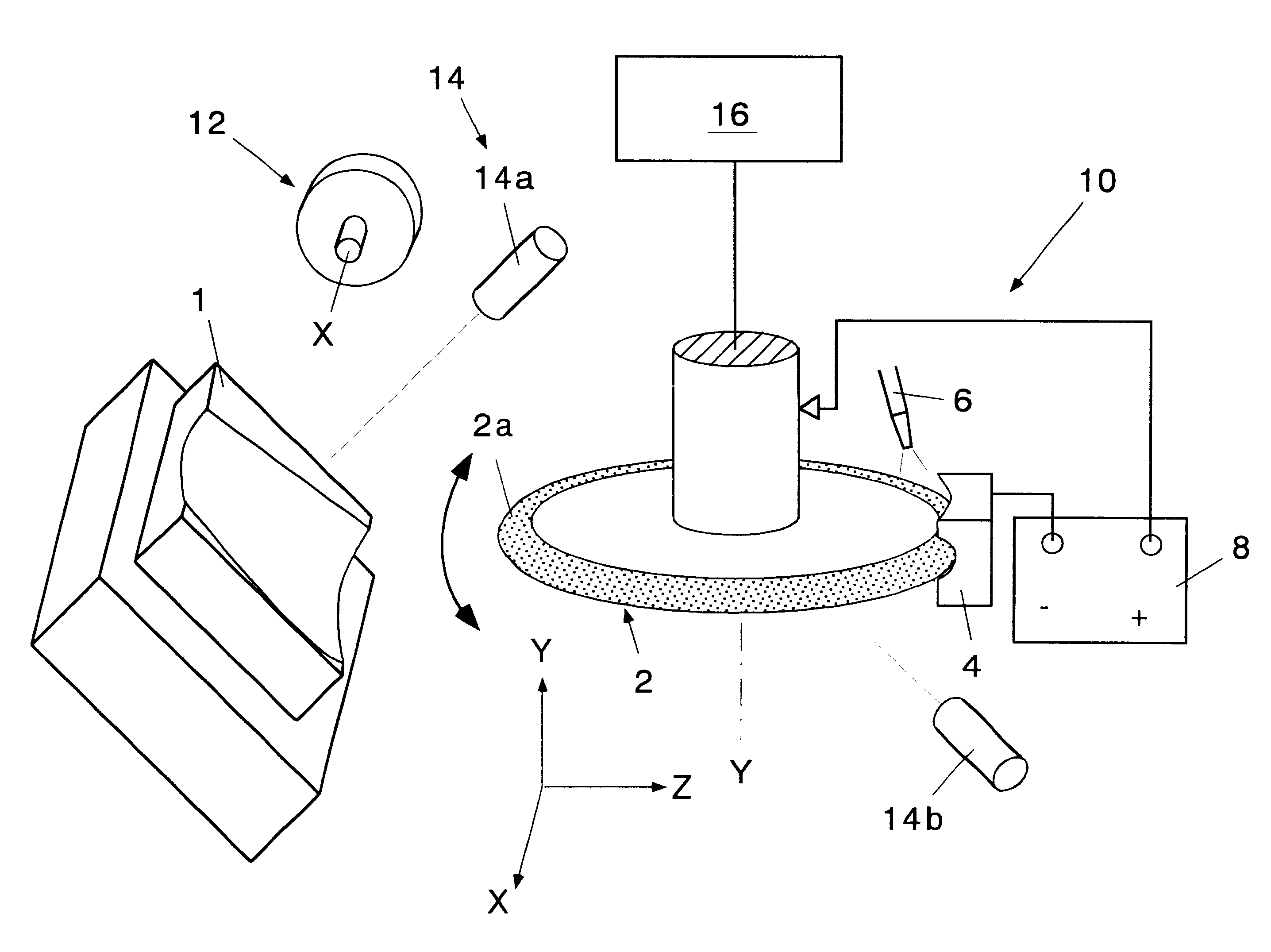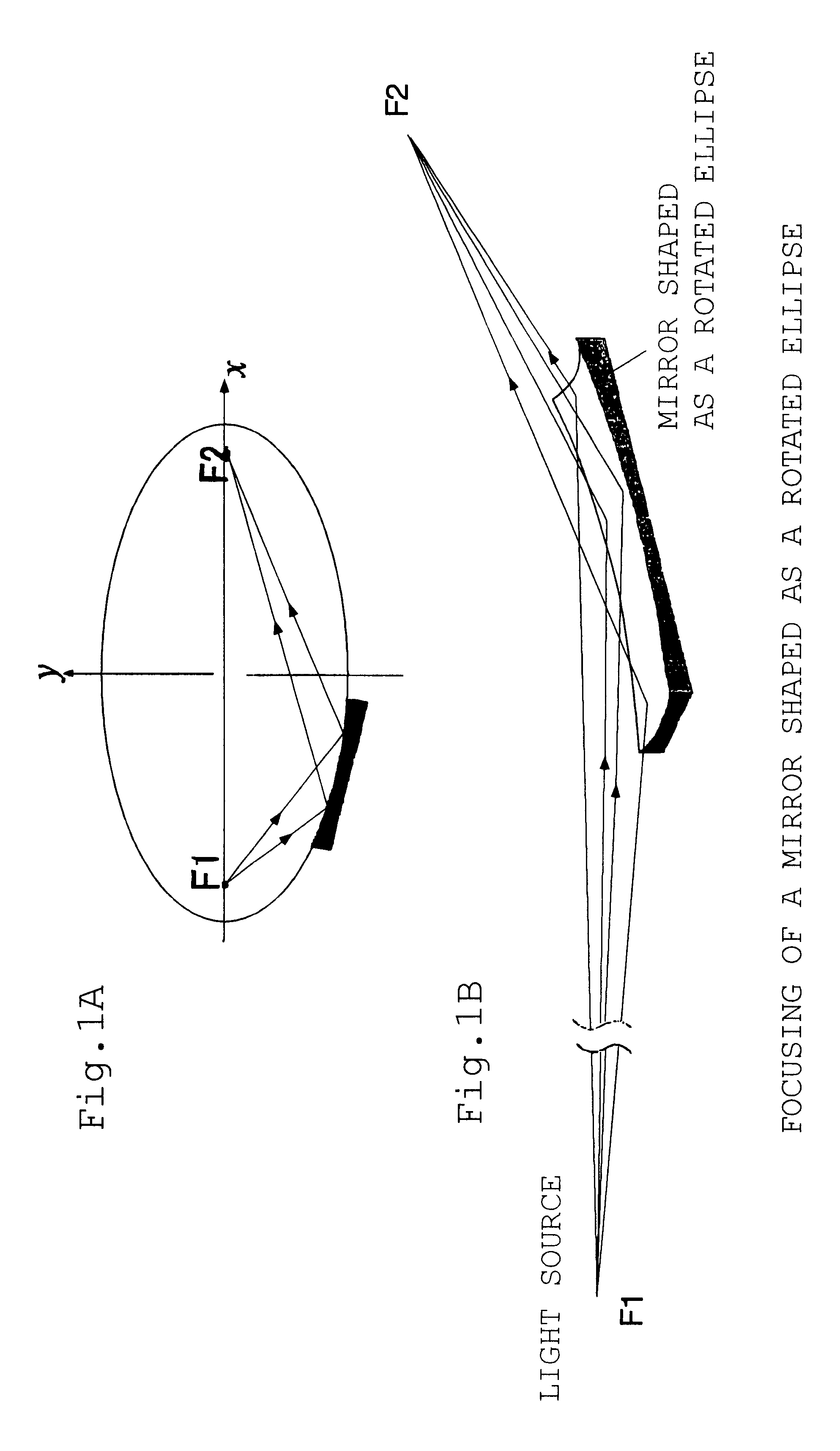Method of grinding an axially asymmetric aspherical mirror
a technology of axial asymmetry and aspherical mirror, which is applied in the direction of optical surface grinding machines, manufacturing tools, abrasive surface conditioning devices, etc., can solve the problems of limiting the practical application of axially asymmetric aspherical mirror, large processing amount, and poor accuracy of processed surface with respect to reference surfaces
- Summary
- Abstract
- Description
- Claims
- Application Information
AI Technical Summary
Benefits of technology
Problems solved by technology
Method used
Image
Examples
Embodiment Construction
Preferred embodiments of the present invention are described referring to the drawings. In each drawing, common portions are identified with the same reference numbers, and duplicate descriptions are omitted.
FIG. 3 is a flow chart for processing an axially asymmetric aspherical mirror. As shown in FIG. 3, the raw material must be prepared, and grinding and polishing processes are required to produce the axially asymmetric aspherical mirror. Although the following embodiments are described using a mirror with a rotated elliptical surface as example of an axially asymmetric aspherical mirror, the present invention should not be limited only to this mirror, but the invention can also be applied to reflecting mirrors with axially asymmetric aspherical surfaces known in the prior art, including rotated parabolic surfaces and rotated hyperbolic surfaces.
Referring to FIG. 3, the raw material of an axially asymmetric aspherical mirror is prepared by selecting from the following materials--c...
PUM
| Property | Measurement | Unit |
|---|---|---|
| diameter | aaaaa | aaaaa |
| diameter | aaaaa | aaaaa |
| roughness | aaaaa | aaaaa |
Abstract
Description
Claims
Application Information
 Login to View More
Login to View More - R&D
- Intellectual Property
- Life Sciences
- Materials
- Tech Scout
- Unparalleled Data Quality
- Higher Quality Content
- 60% Fewer Hallucinations
Browse by: Latest US Patents, China's latest patents, Technical Efficacy Thesaurus, Application Domain, Technology Topic, Popular Technical Reports.
© 2025 PatSnap. All rights reserved.Legal|Privacy policy|Modern Slavery Act Transparency Statement|Sitemap|About US| Contact US: help@patsnap.com



